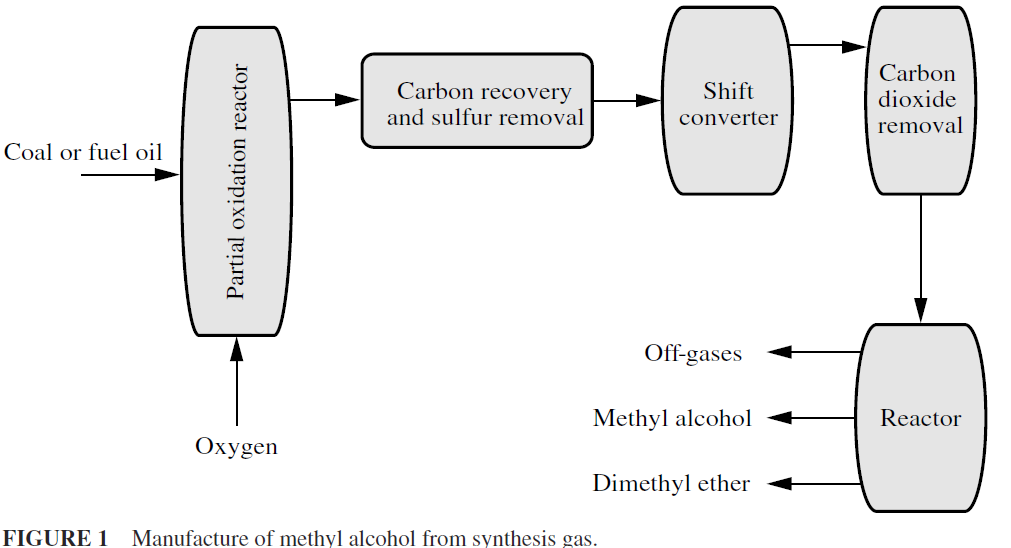


 علم الكيمياء
علم الكيمياء 
 الكيمياء التحليلية
الكيمياء التحليلية 
 الكيمياء الحياتية
الكيمياء الحياتية 
 الكيمياء العضوية
الكيمياء العضوية 
 الكيمياء الفيزيائية
الكيمياء الفيزيائية
 الكيمياء اللاعضوية
الكيمياء اللاعضوية 
 مواضيع اخرى في الكيمياء
مواضيع اخرى في الكيمياء
 الكيمياء الصناعية
الكيمياء الصناعية |
Read More
Date: 12-2-2016
Date: 12-2-2016
Date: 12-2-2016
|
HYDROGENATION
In its simplest interpretation, hydrogenation is the addition of hydrogen to a chemical compound. Generally, the process involves elevated temperature and relatively high pressure in the presence of a catalyst.
Hydrogenation yields many useful chemicals, and its use has increased phenomenally, particularly in the petroleum refining industry. Besides saturating double bonds, hydrogenation can be used to eliminate other elements from a molecule. These elements include oxygen, nitrogen, halogens, and particularly sulfur. Cracking (thermal decomposition) in the presence of hydrogen is particularly effective in desulfurizing high-boiling petroleum fractions, thereby producing lower-boiling and higher-quality products.
Although occasionally hydrogen for a reaction is provided by donor solvents and a few older reactions use hydrogen generated by acid or alkali acting upon a metal, gaseous hydrogen is the usual hydrogenating agent.
Hydrogenation is generally carried out in the presence of a catalyst and under elevated temperature and pressure. Noble metals, nickel, copper, and various metal oxide combinations are the common catalysts. Nickel, prepared in finely divided form by reduction of nickel oxide in a stream of hydrogen gas at about 300°C, was introduced by 1897 as a catalyst for the reaction of hydrogen with unsaturated organic substances to be conducted at about 175°C. Nickel proved to be one of the most successful catalysts for such reactions. The unsaturated organic substances that are hydrogenated are usually those containing a double bond, but those containing a triple bond also may be hydrogenated. Platinum black, palladium black, copper metal, copper oxide, nickel oxide, aluminum, and other materials have subsequently been developed as hydrogenation catalysts. Temperatures and pressures have been increased in many instances to improve yields of desired product. The hydrogenation of methyl ester to fatty alcohol and methanol, for example, occurs at about 290 to 315°C and 3000 psi (20.7 MPa). In the hydrotreating of liquid hydrocarbon fuels to improve quality, the reaction may take place in fixed-bed reactors at pressures ranging from 100 to 3000 psi (690 kPa to 20.7 MPa).
Many hydrogenation processes are of a proprietary nature, with numerous combinations of catalysts, temperature, and pressure possible. Lower pressures and higher temperatures favor dehydrogenation, but the catalysts used are the same as for hydrogenation. Methyl alcohol (methanol) is manufactured from a mixture of carbon monoxide and hydrogen (synthesis gas), using a copper-based catalyst.
CO + 2H2 → CH3OH
In the process (Fig. 1), the reactor temperature is 250 to 260oC at a pressure of 725 to 1150 psi (5 to 8 MPa). High- and low-boiling impurities are removed in two columns and the unreacted gas is recirculated. New catalysts have helped increase the conversion and yields. The older, high-pressure processes used zinc-chromium catalysts, but the low pressure units use highly active copper catalysts. Liquid-entrained micrometer-sized catalysts have been developed that can convert as much as 25 percent per pass. Contact of the synthesis gases with hot iron catalyzes competing reactions and also forms volatile iron carbonyl that fouls the copper catalyst. Some reactors are lined with copper.
Because the catalyst is sensitive to sulfur, the gases are purified by one of several sulfur-removing processes, then are fed through heat exchangers into one of two types of reactors. With bed-in-place reactors, steam at around 4.5 kPa, in quantity sufficient to drive the gas compressors, can be generated. A tray-type reactor with gases introduced just above every bed for cooling offers more nearly isothermal operation but does not give convenient heat recovery.

Reaction vessels are usually of two types: one in which the contents are agitated or stirred in some way and the other in which the reactor and contents are stationary. The first is used with materials such as solids or liquids that need to be brought into intimate contact with the catalyst and the hydrogen.
The second type is used where the substance may have sufficient vapor pressure at the temperature of operation so that a gas-phase as well as a liquid-phase reaction is possible. It is also most frequently used in continuous operation where larger quantities of material need to be processed than can be done conveniently with batch methods.
In hydrogenation processes, heating of the ingoing materials is best accomplished by heat exchange with the outgoing materials and adding additional heat by means of high-pressure pipe coils. A pipe coil is the only convenient and efficient method of heating, for the reactor is usually so large that heating it is very difficult. It is usually better practice to add all the heat needed to the materials before they enter the reactor and then simply have the reactor properly insulated thermally. Hydrogenation reactions are usually exothermic, so that once the process is started, the problem may be one of heat removal. This is accomplished by allowing the heat of reaction to flow into the ingoing materials by heat exchange in the reactor, or, if it is still in excess, by recycling and cooling in heat exchangers the proper portion of the material to maintain the desired temperature.



|
|
|
|
دراسة تحدد أفضل 4 وجبات صحية.. وأخطرها
|
|
|
|
|
|
|
جامعة الكفيل تحتفي بذكرى ولادة الإمام محمد الجواد (عليه السلام)
|
|
|